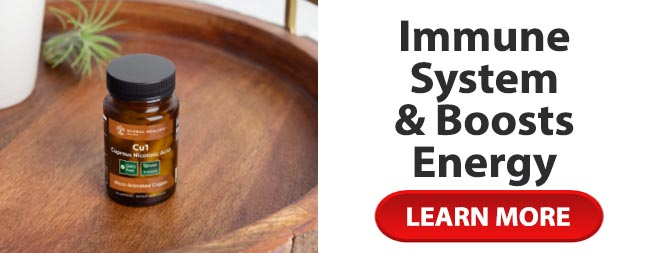Measles
(Rubella) is a highly contagious respiratory disease. This causes body rash maculopapular eruption over the entire body including flu like symptoms such as fever, general malaise, sneezing, nasal congestion, brassy cough, conjunctivitis caused by the rubella virus.
Measles, which is also called English Measles, spread through respiration or due to the contact with fluids from an infected person\’s nose and mouth, either directly or through aerosol transmission. It is so contagious that around 90% of people without immunity sharing a house with an infected person will catch it. The infection involves average incubation period of 14 days (range 6–19 days) and infection lasts from 2–4 days prior, until 2–5 days following the onset of the rash (this denotes 4–9 days infectivity in total).
Although most people recover without troubles, rubella can result in pneumonia or inflammation of the brain known as encephalitis.
Causes
Both the rubeola and rubella viruses spread through the respiratory tract. Therefore these are contagious through coughing and sneezing. In fact, the rubeola virus is one of the most contagious viruses known so far. As a result, it can spread rapidly in a vulnerable population. Infected people carry the virus in their respiratory tract before they get sick, so they can spread the disease without knowing of it.
If people are immune to the virus either through vaccination or by having had measles in the past, they cannot get the disease developed by that virus.
Symptoms
The onset is gradual with rhinitis, lethargy, loss of appetite, gradual increase of temperature for the first two days. The fever may rise to 101 to 103 degrees (F).
Koplik\’s spots are usually seen on the buccal mucosa (i.e. inner cheek) opposite to the molars on the second or third day.
About the fourth day, fever usually reaches a higher elevation than previously, at times as high as 104 to 106 degrees (F). With this recurrence the rash appears.
The measles rash is first seen on the face. This first appears as small maculopapular lesions that increase rapidly in size and coalesce in places, often resulting in a swollen, blotchy appearance. The rash gradually extends to the body and extremities, and in some areas it may take after the rash of scarlet fever.
The cough, during this time indicates bronchitis produced by the inflammatory state of the mucous membranes, which no doubtedly corresponds to the rash seen on the skin.
Normally, the rash lasts from 4 to 5 days; and as it disappears gradually, the temperature also decreases. As a result, 5 days after the appearance of the rash, the temperature reaches normal level or approximately normal in unfussy cases.
Most measles-related deaths are due to complications related to the disease. These complications are more common in kids under the age of five, or adults over the age of 20. The most severe complications comprise blindness, encephalitis (an infection that causes brain swelling), severe diarrhoea and related dehydration, ear infections, or severe respiratory infections for instance, pneumonia. Deaths due to measles occur in 10% of measles cases among populations suffering from high levels of malnutrition and inadequate health care.
Self-Care at Home
Although there is hardly any cure for measles, you can follow these steps to make the disease more bearable. These include:
Get plenty of rest. Maintain bed rest and ensure calm activities for the child. If one feels sensitivity to light, keep room dimly lit.
Remove eye secretions using warm saline or water and prohibit the child from rubbing the eyes.
Have antipruritic medication to prevent itching and tepid sponge baths as directed.
Drink plenty of fluids in order to avoid dehydration.
A humidifier or vaporizer may be used to ease the cough.
Keep your child separate until fifth day of rash.
Pain relievers and fever reducers like acetaminophen (Tylenol, Liquiprin Drops, and other brands) and ibuprofen (Advil, Motrin and other brands) can reduce symptoms if used as prescribed. Avoid giving aspirin to children or teenagers as it may cause a disease called Reye syndrome.
There is no definite treatment or cure for measles. Children should stay at home and avoid going to school until they are instructed to return by their health-care provider.
Prevention
Immunization is the most effective way to prevent measles.
Normally 2 doses of live measles vaccine are recommended, first shot is given at 15 months of age, and the second shot is given before entering either kindergarten or first grade (4-6yrs of age).
Measles re-vaccination guidelines:
Persons vaccinated with live measles vaccine before their first birthday should be regarded as unvaccinated, and should get at least 1 dose of measles vaccine.
Immunization is recommended once for all persons born after 1956 who do not have the evidence of immunity to measles (receipt of live vaccine on or after the first birthday, laboratory evidence of immunity, or a history of physician-documented measles).
A second dose of measles vaccine is suggested for young adults in settings where individuals gather together such as in colleges, residential settings, etc.
Passive immunization with antibodies is prescribed for those who are at greater risk of developing severe measles and for those who have been open to the elements of infection. For instances, children with malignant disease and those having cell-mediated immunity defects. Passive immunizations must be given within six days after an exposure to get effective result.
A special immunization known as immune globulin may be required for certain high-risk people after being exposed to measles. These include children younger than 1 year, children with poor immune systems, and pregnant women. If you have by any chance been exposed to measles, contact your doctor to decide if you require immune globulin.

